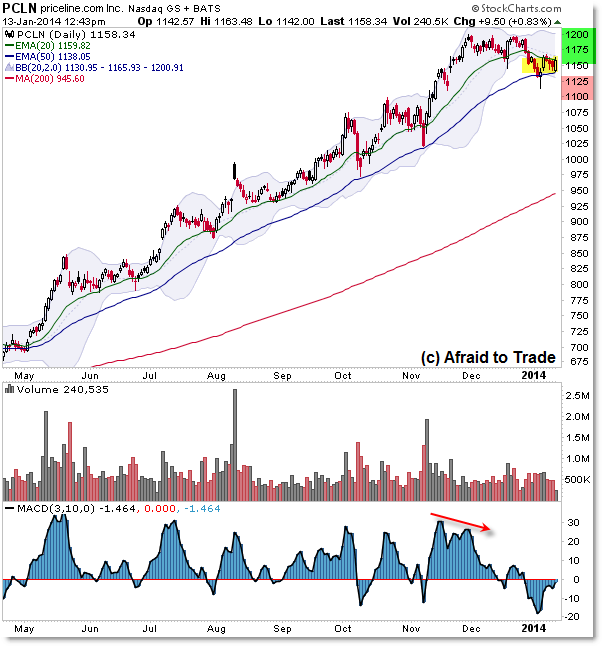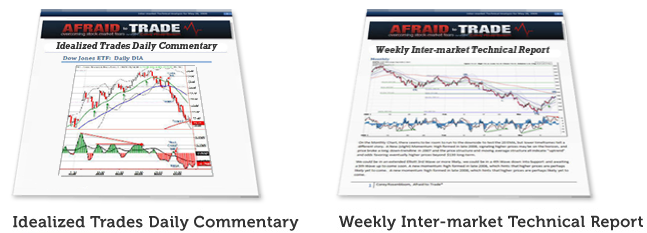Trade Planning for Priceline PCLN EMA Squeeze Play
One of my favorite short-term trading (breakout) patterns is the “EMA Squeeze” or “EMA Compression” Play.
Priceline shares (PCLN) are forming one of these rare but tradable patterns on the Daily Chart so let’s take a look, set up parameters, and study the lesson from the future outcome.
Here’s the Daily Chart broader picture in motion:

We see a broader or prevailing uptrend as evidenced by the series of higher price highs and higher price lows along with the “Moving Average Orientation” in play on the Daily Chart.
This tends to tip the odds to the side of bullish trend continuation unless proven otherwise with a breakdown (and sustained close) under the rising 50 day EMA
We can see this clearer on a zoomed-in perspective for planning:

Notice how the 50 day EMA served as tradable “Make or Break” (stop under the 50 EMA on an aggressive support-buy opportunity) event on October 9 and November 7, 2013.
We tend to prefer retracement or ‘flag’ trading opportunities to join into a dominant uptrend, or to trade breakouts to new highs as our second-chance entry. I prefer retracements because they tend to offer better risk/reward profiles.
What we’re seeing now is more interesting than what occurred during past retracements to EMA support.
This time, price is “compressed” or “squeezed” between the flat/falling 20 day Exponential Moving Average (EMA) and the still-rising 50 day EMA.
We can see price bouncing or playing ping-pong between these EMA levels on an intraday basis – the intraday high reversed at the upper 20 day EMA while the intraday low similarly reversed at the rising 50 day EMA.
This means intraday traders can continue using these “compressing” averages as decision-support, while short-term breakout traders can stand aside and look to enter on a breakout above the 20 EMA into $1,140 per share or else beneath the 50 day EMA into $1,120.
“Scalp” or quick-impulse parameters set an upside breakout target back to $1,200 (or above if the trend continues) while downside parameters target $1,100 or even the $1,090 level which would be the horizontal trendline as drawn.
Whether you look to trade this potential breakout candidate or not, it can be helpful to keep it on a watchlist and watch price play out a potential – though not guaranteed – breakout toward either target.
While there are plenty of educational examples on these three charts, continue to focus on trend structure and the daily moving averages.
Follow along with members of the Daily Commentary and Idealized Trades summaries for real-time updates and additional trade planning parameters as we watch a “hold and bounce” or “break and retrace” scenario play out in the near future.
Corey Rosenbloom, CMT
Afraid to Trade.com
Follow Corey on Twitter: http://twitter.com/afraidtotrade
Corey’s new book The Complete Trading Course (Wiley Finance) is now available along with the newly released Profiting from the Life Cycle of a Stock Trend presentation (also from Wiley).

